How to ask searching questions close to the goal-line
Even at the elite level of professional rugby, assumptions about what to do in various scenarios can persist for far too long, without ever being seriously questioned.
In the English Premiership, most of the assumptions have been questioned by the Exeter Chiefs club, both on and off the field. Off the field, they have brought into question the financial model which requires a very wealthy benefactor, willing to pump millions into the purchase of imported stars from across the world as the basis for success.
They have questioned the need to plunge deeply into debt to bankroll those big names. Exeter are the only English Premiership club currently in the black, and they have built their success around home-produced talent accompanied by more modestly-priced foreign additions.
Their growth has been steady and progressive rather than meteoric, but now they are deservedly European club champions.
On the field, much of the innovation in the English game has been derived from Exeter. Again, their coaches are not afraid to question assumptions about how the game should be played.
One such assumption is that, if you want to use power to score from close range, you need to uemploy the 5-metre driving lineout as a base. Up until their recent Gallagher Premiership semi-final against Bath, Exeter had used the tapped penalty as the springboard for 17 league tries in the red zone.
The tapped penalty followed by a forward drive has far fewer moving parts than a driving lineout, so there are fewer elements that can go wrong. At the lineout, the throw has to be straight and to the right spot, the catch has to be made cleanly (sometimes under pressure from an opponent), and the blockers have to avoid getting ahead of the receiver and drawing a penalty for obstruction. A collapse which will turn over possession to the opponent in the aftermath then has to be avoided – if all of the foregoing parts work perfectly.
A tapped penalty is much simpler. A strong ball-carrier picks up the ball and runs hard at the defence and he/she is usually only stopped a couple of metres from the goal-line. From then on, it is matter of accurate pick & go and close driving technique – what Sir Graham Henry calls ‘Piggies’.
Let’s begin at the beginning. The Chiefs use their hooker Luke Cowan-Dickie to tap and go after a penalty awarded in the middle third of the field, and close to the opposition goal-line:
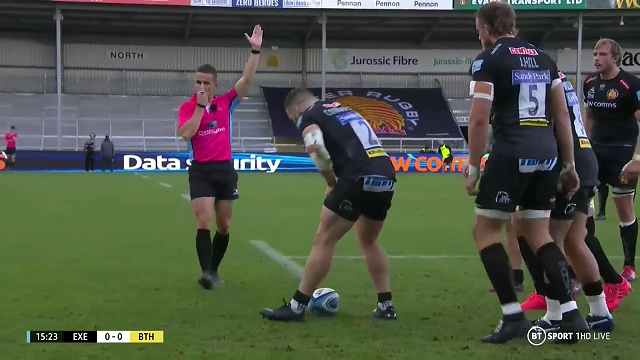
They know they can rely on Cowan-Dickie to get within two metres of the line on the initial drive, and after that it is a matter of employing Exeter’s excellent close-quarter technique to convert the score:
The first pick & go is not straight ahead against an organised defence, it angles outside, towards the 2nd defender out from the ruck. Scotland’s Johnny Gray is the ‘nail’ carrying the ball, the supporting player outside him is the ‘hammer’ who knocks him back into a straight line.
On the first phase, the Exeter number 11 is not powerful enough to hammer the nail in over the goal-line, but that mission is accomplished on the following phase:
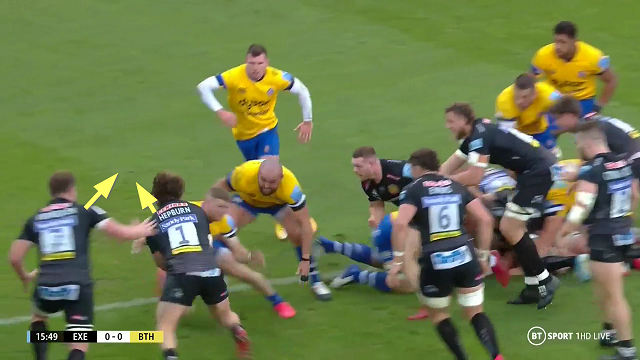
Exeter loose-head prop Alec Hepburn shuffles sideways until he is on the outside shoulder of the 2nd Bath defender, and this time the nail is hammered home by a stronger tool, in the shape of big flanker Jacques Vermeulen. Hepburn angles out to get the arm tackle, and Vermeulen knocks him straight in for the try.
An even more straightforward example of the technique occurred shortly afterwards:
Gray receives the shovel pass from the base and heads towards that soft outside shoulder of the 2nd defender. Number 7 Vermeulen takes care of the straightening/driving in process, because he is already underneath the next Bath defender:
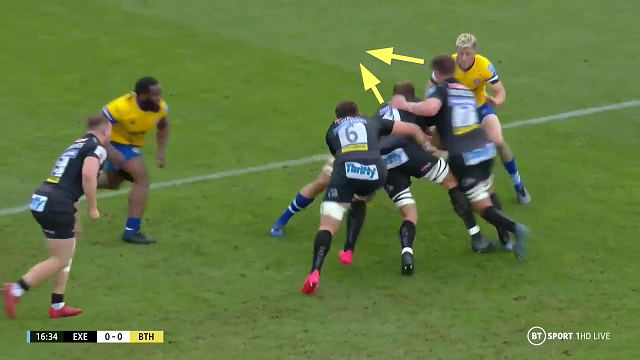
Put it all together, and you have a scoring formula which does not even need a start-point within 5 metres of the opposition goal-line.
In their European Champions Cup semi-final against Toulouse, the Chiefs had the confidence to launch Cowan-Dickie from fully seven or eight metres out:
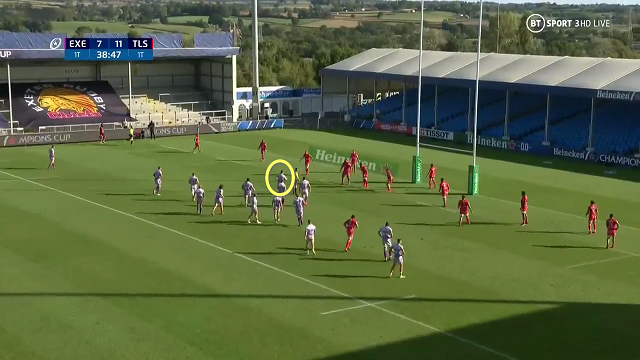
The result was exactly the same as it was against Bath:
Why bother using a power formula which requires three or four different aspects to go right, when you can use an alternative which only needs one or two? Why plunge yourself into debt and spend the great majority of your club income on inflated player salaries, when you can build organically from within with a little bit of help. The Exeter club has become pretty good at asking questions, both on and off the field.
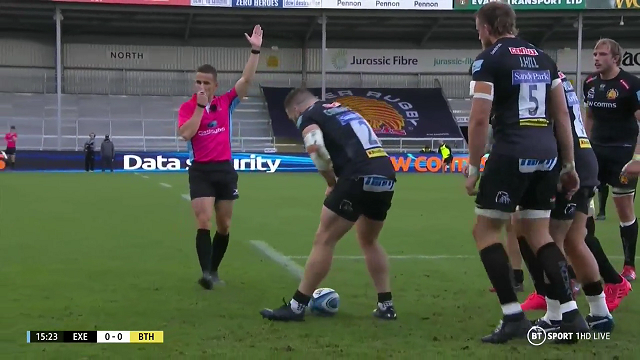











.jpg)

.jpg)







